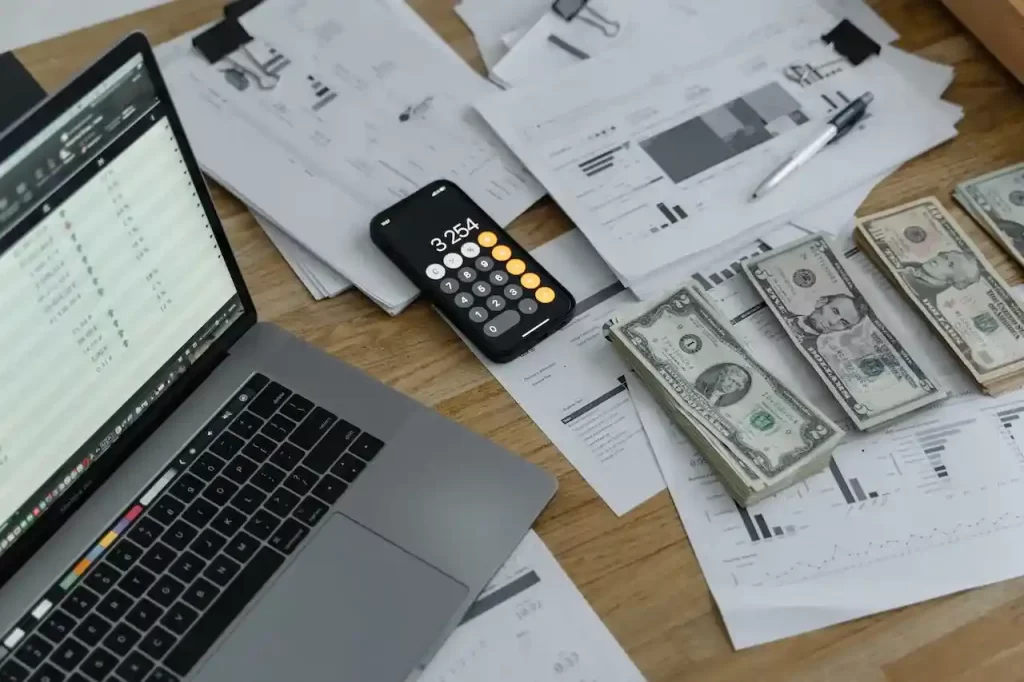Are you tired of struggling with bad debt and feeling like you’re drowning in a sea of bills? It’s time to take control of your finances and create a budget that works for you. In this article, I’ll provide you with practical tips and tools to help you eliminate your bad debt and achieve financial freedom.
Creating a budget can be daunting, but it’s an essential step towards taking control of your finances. This guide will break down the process into manageable steps, from assessing your debt to reducing expenses and increasing income. I’ll provide you with real-life examples and helpful resources to guide you along the way.
By following our tips and tricks, you’ll be able to create a budget that fits your unique financial situation and lifestyle. You’ll learn how to prioritize your debts, negotiate bills, and make the most of your income. We’ll also show you how to visualize your progress and stay motivated throughout your debt repayment journey.
Don’t let bad debt control your life any longer. With our guide, you’ll have the tools you need to take control of your finances and achieve financial freedom.
Assessing Your Debt
Assessing your debt is the first step towards creating a winning budget and eliminating bad debt. It’s essential to have a clear understanding of your outstanding debts before you can develop a plan to tackle them.
Start by making a list of all your debts, including credit card balances, loans, and any other outstanding payments. It’s important to include the amount owed, interest rate, and minimum payment required for each debt. Once you have a comprehensive list, you’ll be able to see the big picture of your debt and identify any areas that need immediate attention.
Assessing your debt can be overwhelming, especially if you have multiple debts with different payment terms and interest rates.
By assessing your debt, you’ll be able to create a clear plan of action. You’ll learn how to prioritize your debts based on interest rates and payment terms, and determine which debts to focus on first. You’ll also be able to identify areas where you can reduce expenses and increase income to put towards debt repayment.
Assessing your debt is a crucial step towards financial freedom. With our guide, you’ll have the tools you need to assess your debt and develop a plan to eliminate it. Don’t let bad debt control your life any longer. It’s time to take control of your finances and create a budget that works for you.
Creating A Budget
Creating a budget is a critical step towards achieving financial freedom and eliminating bad debt. But it’s important to be realistic and honest with yourself when creating a budget. You must consider all your monthly income sources and expenses and be willing to make adjustments to reach your financial goals.
Start by listing all your monthly income sources, including your salary, freelance work, and any other sources of income. Next, list all your monthly expenses, including rent or mortgage, utilities, groceries, entertainment, and any other expenses you have.
After listing all your income and expenses, compare the two to see if you have any extra income that can be used to pay off your debts. If your expenses exceed your income, it’s essential to identify areas where you can cut back.
It’s also important to prioritize your debts and allocate a specific amount of money towards debt repayment each month. By creating a budget, you’ll have a clear understanding of where your money is going and how you can make adjustments to reach your financial goals.
Creating a budget may seem daunting, but it’s an important step towards taking control of your finances and achieving financial freedom. With our guide, you’ll have the tools you need to create a budget that works for you and helps you eliminate your bad debt.
Reducing Expenses
Reducing your expenses is one of the most important steps towards getting out of bad debt. It’s essential to make sure you’re living within your means and cutting back on non-essential expenses. This might sound daunting, but there are several simple ways to do it.
One of the easiest ways to reduce expenses is by cutting back on non-essential expenses such as eating out or going to the movies. Instead, opt for less expensive options such as cooking at home or renting a movie. You might be surprised at how much money you can save by making these small changes.
Negotiating bills such as cable and phone bills is another great way to reduce expenses. Often, companies will offer promotions or discounts to retain customers, so don’t be afraid to ask. You might be able to save a significant amount of money each month just by asking for a discount or switching to a lower-priced plan.
Increasing Income
Increasing your income is an excellent way to help you get out of bad debt faster. While it might sound daunting, there are several ways to increase your income without taking on a second job or working longer hours.
One way to increase your income is to look for opportunities for overtime at your current job. If overtime isn’t available, consider asking your boss for a raise. Highlight your accomplishments and contributions to the company to demonstrate your value and show that you deserve a raise.
Another way to increase your income is to look for ways to make money on the side. You might consider selling items you no longer need, offering freelance services or starting a small business. There are many online platforms that make it easy to sell items or services, and many of these platforms are free to use.
Investing in yourself and your education is another way to increase your income over the long-term. Consider taking a course or training program that will help you develop new skills and increase your earning potential.
Paying Off Your Debt
Paying off debt can feel overwhelming, but with a solid plan, it’s possible to make progress and eventually become debt-free.
One popular strategy for paying off debt is the “snowball” method. With this approach, you start by paying off the smallest debts first and then move on to larger debts. As you pay off each debt, you apply the money you were using to pay that debt to the next one on the list, creating a “snowball” effect. This method can help build momentum and keep you motivated as you see your debts getting paid off one by one.
Another strategy is the “avalanche” method, where you focus on paying off the debt with the highest interest rate first, and then move on to the next highest interest rate debt. This method can save you money on interest payments in the long run, but it may not provide the same sense of progress and motivation as the snowball method.
Ultimately, the key to paying off debt is to stick to a plan and remain consistent. Make a budget, track your spending, and prioritize paying off your debts as quickly as possible. With dedication and hard work, you can successfully pay off your debts and achieve financial freedom.
Visualizing Your Progress
Visualizing your progress is a powerful way to stay motivated and on track as you work towards paying off your debt. One way to do this is by creating a debt repayment chart. This chart can help you see how much progress you’ve made and how far you have left to go.
To create a debt repayment chart, start by listing all of your debts, including the amount owed and the interest rate. Then, determine your minimum monthly payments for each debt. Next, create a timeline for paying off each debt, and mark each payment on the chart as you make it.
As you pay off each debt, you’ll be able to see your progress visually, which can be incredibly motivating. You might also consider rewarding yourself when you reach certain milestones, such as paying off a specific debt.
Another way to visualize your progress is by using a debt repayment app or tool. These tools can help you track your progress and provide you with a visual representation of how much debt you’ve paid off and how much you have left to go.
By visualizing your progress, you can stay motivated and focused on your goal of becoming debt-free.
Conclusion
Congratulations on taking the first step towards getting out of bad debt by learning how to create a winning budget. With our practical tips and advice, you can take control of your finances and begin to pay off your debts.
Remember, creating a budget is not a one-time task, but rather an ongoing process that requires regular monitoring and adjustments. By sticking to your budget and making conscious choices about your spending habits, you can reduce your debt and improve your financial health.
Visualizing your progress and celebrating small wins can help you stay motivated along the way. By tracking your debt reduction and regularly reviewing your budget, you can see the progress you are making towards your financial goals.
At Mastering Debt Repayment, we are here to support you on your journey towards financial freedom. By following our tips and advice, you can take control of your finances and start living a life free of bad debt. Remember, it’s never too late to start making positive changes, and with the right mindset and tools, you can achieve financial success.





